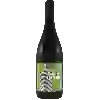
Domaine du Pié LoubiéVieilles Vignes
This wine generally goes well with beef, game (deer, venison) or lamb.
Food and wine pairings with Vieilles Vignes
Pairings that work perfectly with Vieilles Vignes
Original food and wine pairings with Vieilles Vignes
The Vieilles Vignes of Domaine du Pié Loubié matches generally quite well with dishes of beef, lamb or game (deer, venison) such as recipes of baked lasagna, sauté of lamb with curry or rabbit with mustard and tomatoes.
Details and technical informations about Domaine du Pié Loubié's Vieilles Vignes.
Discover the grape variety: Aledo
This variety has been cultivated for a long time in Spain. In France, it is practically unknown, although it is registered in the Official Catalogue of vine varieties, list A2.
Informations about the Domaine du Pié Loubié
The Domaine du Pié Loubié is one of of the world's greatest estates. It offers 4 wines for sale in the of Côtes-du-Rhône-Villages 'Seguret' to come and discover on site or to buy online.
The wine region of Côtes-du-Rhône-Villages 'Seguret'
The wine region of Côtes-du-Rhône-Villages 'Seguret' is located in the region of Côtes-du-Rhône-Villages of Rhone Valley of France. Wineries and vineyards like the Domaine Mourchon or the Domaine du Pourra produce mainly wines red, pink and white. The most planted grape varieties in the region of Côtes-du-Rhône-Villages 'Seguret' are Mourvèdre, Roussanne and Marsanne, they are then used in wines in blends or as a single variety. On the nose of Côtes-du-Rhône-Villages 'Seguret' often reveals types of flavors of red fruit, honey or nutmeg and sometimes also flavors of cocoa, coffee or violet.
The wine region of Rhone Valley
The Rhone Valley is a key wine-producing region in Southeastern France. It follows the North-south course of the Rhône for nearly 240 km, from Lyon to the Rhône delta (Bouches-du-Rhône), near the Mediterranean coast. The Length of the valley means that Rhône wines are the product of a wide variety of soil types and mesoclimates. The viticultural areas of the region cover such a distance that there is a widely accepted division between its northern and southern parts.
The word of the wine: Austere
A full-bodied, closed wine whose qualities are noticeable, but which does not express its full potential.












